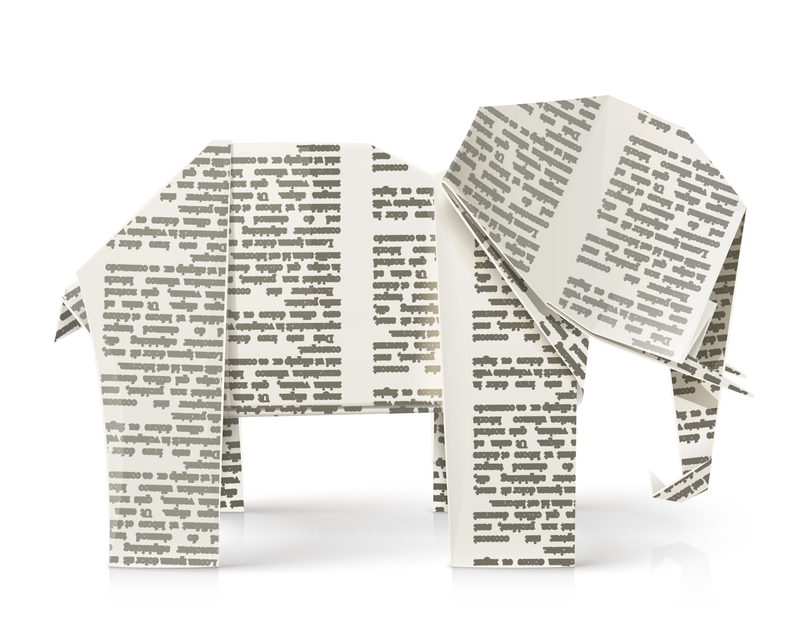Efficient Methods for Packaging Disposal and Cardboard Recycling
In the fast-paced world of commerce and e-commerce, packaging materials have become an integral part of daily life. Among these, cardboard packaging stands out due to its widespread usage in shipping, storage, and product protection. As our consumption habits continue to grow, so does the accumulation of packaging waste. Finding efficient and eco-friendly ways to dispose of packaging and recycle cardboard is not just an environmental necessity but also an economic opportunity. In this comprehensive article, discover innovative, practical, and sustainable methods for efficient packaging disposal and cardboard recycling.

Understanding the Importance of Packaging Waste Management
Packaging waste, primarily consisting of cardboard, paper, plastics, and sometimes mixed materials, forms a significant portion of municipal solid waste worldwide. According to the Environmental Protection Agency (EPA), packaging accounts for over 30% of total waste generated annually. Cardboard, being biodegradable and easily recyclable, is a focal point for waste reduction strategies.
- Environmental protection: Reducing landfill waste minimizes pollution and conserves resources.
- Economic benefits: Recycling cardboard and other packaging can reduce costs and create jobs in the recycling sector.
- Sustainable business practices: Businesses that efficiently manage their packaging waste improve their public image and comply with regulations.
Main Types of Packaging Material and Their Disposal Challenges
Cardboard Packaging
Cardboard is widely used for shipping boxes, product packaging, and even padded envelopes. Its popularity stems from its lightweight nature, strength, and easy printability. However, improper disposal can result in excessive landfill accumulation.
Plastic Packaging
Plastic has long been a challenge for waste management systems. Its resilience and lightweight properties make it popular for packaging but also lead to severe environmental consequences if not managed correctly.
Mixed Material Packaging
Items like bubble mailers, blister packs, and laminated boxes include a mix of paper, plastic, and other materials, complicating the recycling process.
Efficient Methods for Packaging Disposal
Proper disposal is the first step to efficient recycling. Here are the proven, eco-friendly techniques for packaging waste management:
1. Source Separation
The most crucial method for efficient packaging disposal is source separation. This involves sorting waste into different material categories right at the point of disposal -- at home, business, or warehouses.
- Cardboard (corrugated and non-corrugated)
- Paper (newspapers, magazines, office paper)
- Plastic films and wraps
- Glass and metals
Proper sorting avoids contamination, making recycling easier and more cost-effective.
2. Flattening Cardboard Boxes
Before disposing or recycling, always flatten cardboard boxes. Flattening maximizes storage space in your recycling bin and improves efficiency during transport to recycling facilities. Remove every packing tape, staples, and plastics attached to the cardboard for high-quality, uncontaminated recycling.
3. Community Collection Points
Utilize community recycling bins and collection points. Many municipalities provide designated drop-off centers for large quantities of packaging waste. This simplifies the process and ensures materials are handled appropriately.
4. Business and Industrial Packaging Disposal
Businesses generate substantial packaging waste daily. Implementing a structured in-house recycling program is crucial.
- Dedicated bins: Position bins for cardboard, plastics, and other recyclables in accessible areas.
- Scheduled pickups: Work with waste management and recycling companies for regular collection.
- Employee training: Educate staff on correct disposal practices to minimize contamination.
5. Composting Biodegradable Packaging
Certain packaging materials, including some cardboards and biodegradable plastics, can be composted. Ensure materials are free from plastic linings or coatings before adding them to compost heaps.
Step-by-step Guide to Efficient Cardboard Recycling
Preparation for Cardboard Recycling
- Remove contaminants: Take out plastic, food waste, and packing peanuts.
- Break down boxes: Flatten them to save space and prevent clogging recycling machinery.
- Keep cardboard dry: Wet cardboard can become unusable for recycling, and mold contamination can make recycling impossible.
How Cardboard Recycling Works
A modern cardboard recycling process involves several steps aimed at maximizing resource recovery:
- Collection: Cardboard is collected from households, businesses, and recycling centers.
- Sorting: Cardboard is separated from other materials. Corrugated cardboard (OCC) is preferred over paperboard or wax-coated cardboard.
- Shredding and pulping: Cardboard is shredded and mixed with water to create pulp, breaking down the fibers.
- Filtering: The pulp is filtered to remove foreign materials.
- Blending: Sometimes, the pulp is mixed with virgin fibers for added strength.
- Rolling and drying: The pulp is pressed and dried to form new sheets of cardboard.
- Finishing: Sheets are cut, layered, and sent to manufacturers for new packaging applications.
Advanced Techniques in Cardboard Recycling
The recycling industry is evolving to improve the efficiency and quality of cardboard recovery. A few notable innovations include:
- Automated sorting machines: Using AI and robotics to separate and grade cardboard for optimal recycling.
- Closed-loop systems: Businesses create circular processes, recycling their own packaging waste into new products.
- De-inking and cleaning technologies: Advanced washing removes inks and coatings, producing higher-quality recycled cardboard.
Key Benefits of Cardboard Recycling
- Reduces landfill space: Cardboard biodegrades, but large amounts take up valuable landfill space and can generate methane.
- Conserves resources: Recycling saves 24% of the energy needed to make cardboard from raw materials.
- Economic incentives: Many municipalities and businesses save money or earn revenue through efficient cardboard recycling.
- Protects forests: Making cardboard from recycled materials reduces deforestation and water use.
Practical Tips for Efficient Packaging Disposal at Home and Business
At Home
- Check local recycling requirements - Not all cardboard types are accepted everywhere.
- Keep the material dry and clean - Food contamination makes recycling difficult.
- Reuse boxes where possible - Storage, crafts, or donations.
- Participate in community cleanup or recycling programs.
For Businesses
- Invest in balers or compactors for large quantities of cardboard.
- Engage with recycling companies for regular pickups.
- Train staff to sort and prepare packaging waste correctly.
- Work with suppliers to minimize unnecessary packaging or switch to recyclable alternatives.
Innovations and Eco-Friendly Solutions for Packaging Disposal
Transitioning to Sustainable Packaging Materials
The future of packaging waste management relies on reducing the problem at its source. Businesses and consumers are increasingly adopting innovative packaging solutions such as:
- Corrugated cardboard with water-based inks: Easily recyclable and less toxic.
- Plant-based plastics and compostable materials which can reduce non-biodegradable waste.
- Returnable packaging systems for e-commerce, reducing waste through multiple reuses.
Extended Producer Responsibility (EPR) and Circular Economy
EPR policies require manufacturers to take responsibility for packaging disposal and recycling at the end of a product's life. This encourages the use of recyclable and eco-friendly packaging from the start, fostering a closed-loop, circular economy.
Consumer Awareness and Role
Raising awareness about cardboard recycling and efficient packaging disposal is crucial. Education campaigns, recycling labels, and accessible collection programs can empower individuals to make a difference.

Frequently Asked Questions about Packaging Disposal and Cardboard Recycling
Is greasy or wet cardboard recyclable?
No. Grease or food contamination weakens the fibers and can cause batches of recycled cardboard to be rejected.
Can colored and printed cardboard be recycled?
Most colored and printed cardboard can be recycled, though excessive ink can lower fiber quality. Remove glossy or heavily coated pieces where possible.
How many times can cardboard be recycled?
Cardboard can be recycled 5-7 times before the fibers become too short to be used again. Then, it is often downcycled into paperboard or other products.
Is recycling cardboard bad for the environment?
On the contrary, recycling cardboard is significantly better for the environment than creating new cardboard from virgin materials. It saves energy, water, and reduces greenhouse emissions.
Conclusion: Embrace Efficient Packaging Disposal and Cardboard Recycling
Efficient methods of packaging disposal and cardboard recycling benefit both individuals and businesses, fostering a cleaner environment, conserving natural resources, and supporting the circular economy. By adopting innovative practices, maximizing recovery, and prioritizing sustainable packaging materials, we pave the way for a greener, more responsible future.
Whether you're an individual sorting residential recyclables or a business managing bulk packaging waste, make a conscious effort to recycle cardboard and ensure proper packaging disposal. Your efforts contribute directly to a healthier planet and a thriving, sustainable economy.
Key Takeaways on Efficient Packaging Disposal and Cardboard Recycling
- Sort and clean packaging waste at the source for optimal recycling.
- Flatten cardboard boxes, remove contaminants, and keep them dry.
- Participate in local recycling programs and use community collection points.
- Consider advanced recycling services and eco-friendly packaging materials for greater impact.
- Support and advocate for policies and programs that encourage waste reduction and recycling.
Adopt these efficient methods for packaging disposal and cardboard recycling today -- and be a part of the solution.